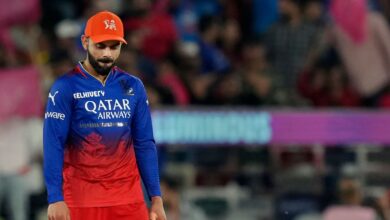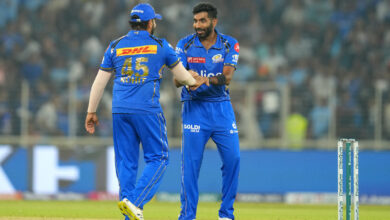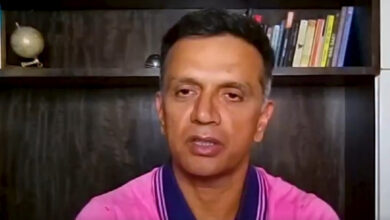Tejaswin Shankar, CWG high jump medall, then Asiad medall decathlete, now aims for Paris in his original event | Sport-others News

After his first career decathlon event in 2022, high jump national record holder Tejaswin Shankar wrote to the Sports Authority of India seeking funds to procure equipment for the 10-event discipline.For athletes, including Tejaswin, who are part of the sports minry’s TOPS (Target Olympic Podium Scheme), such requests are swiftly approved. But the TOPS panel was a little flummoxed as to why India’s first and only high jump Commonwealth Games medall would need equipment for a multisport event.
“After I sent the mail, I got a call from the TOPS panel that I needed to attend a meeting. They had so many questions. Some said okay, some said no, and a few said this was the stupidest thing. But ultimately, they took the gamble. They were shocked and probably thought I had gone a little crazy,” Tejaswin tells The Indian Express.
Not crazy perhaps, but Tejaswin admits he has more than a touch of eccentricity to him. Even though he had dabbled in multi-discipline events during his stint as a student athlete at Kansas State University, no one, including him, was sure that he would pursue it wholeheartedly. Even more so after bagging a horic CWG bronze in Birmingham.
After that medal, Tejaswin took a call that surprised everyone: he decided to switch to decathlon while aiming for the 2023 Asian Games. “I have a mind of my own. I do things because I want to and there isn’t a lot of science behind it. Neither do I do things because people feel I should try it. If I feel like I need to prove a point, I just go for it. Tomorrow if I feel like becoming a shot putter, I will pursue it. I am very eccentric that way,” he says.
Tejaswin silenced his doubters yet again winning a silver medal and also shattered a 12-year-old national record at the Asiad. With such a stellar performance in the decathlon, it would be safe to assume that the 25-year-old would continue in the multisport event, but Tejaswin has “a mind of his own”. This time though, the move was a little more calculated. He is aiming to qualify for the Paris Olympics in high jump in which he first broke the national record as a 17-year-old.
Tejaswin has already hit the road and competed in two high jump events on the European circuit while training from the Kansas State facilities in the United States. He has crossed the bar at 2.22m (Belgium) and 2.22m (Czech Republic) which is still far from his personal best of 2.29m that came in 2018. But his immediate concern is not the results but fine-tuning his body for the event.
Changing body composition
While training for the gruelling decathlon, Tejaswin had put on eight kilos (84 to 92 kgs). Shedding weight for professional athletes is perhaps not a big deal but in Tejaswin’s case, there’s a catch. Those extra kilos are pure muscle mass, especially in the upper body while training for throw events.
“It is easy to lose fat as an athlete because you are very motivated. But cutting down on muscle is not so easy. But the body is so smart that it automatically adapts to the sport you are training for. In decathlon, you have to compete in 10 events with 95 percent intensity while in high jump you have only three or five attempts but have to put in 105 to 110 percent. It takes time to adapt, that’s where the body composition changes,” he explains.
When Tejaswin landed in Delhi in June, he knew there was no point comparing the facilities in the US with those here, but rather making the best of what was on offer. (Special Arrangement)
The changes are already showing. Tejaswin’s arms have become leaner, the broad decathlon shoulders have now toned down as he strictly follows a diet chart prepared nutritions at JSW’s Inspire Institute of Sports.
“When I did 10 events, I could even digest a rock but now even if I eat a leaf, it shows. I have a weight number to get to. When I was in my best shape jumping, I was 84kg. But my fat content had dropped and I had gained 6-7 kilos of muscle. Now I am 88kg. Reducing weight rapidly is not a big deal, you see wrestlers do that all the time. But to lose weight and still feel energised is something else,” he says.
Training for the high jump may sound easier when compared to decathlon, but the definition of ‘easy’ changes according to the event. As a decathlete, Tejaswin used to train 5-6 hours a day but in high jump sessions at times are wrapped up in less than two hours.
“You can’t push yourself too much so we do jumps only once a week but we have other activities and hit the gym. There is more intensity but the volume has reduced. I feel the training has become a lot easier but mentally challenging,” he says.
Tejaswin is hoping to make the cut for Paris through the points system and has mapped out his competitions which include the Interstate meet in June. He is not ruling out the chance of earning a direct qualification clearing the 2.33m mark set for the Games.
“Another option is hitting 2.33 and agar woh hogaya to main sanyas le lunga (If that happens, I will retire). Then I will leave the sport and ride that wave till I die. It has never happened in all these years but who knows, it might happen this year. When you need it the most, sometimes things happen,” he says.







